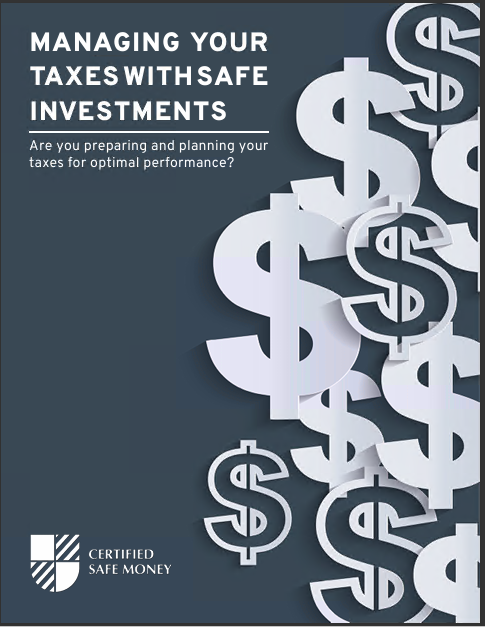Key Takeaways
-
Fixed Index Annuities in 2025 give you a way to protect your money from full market downturns while still linking part of your growth to equity indexes.
-
You trade off unlimited upside for the security of guaranteed protections and predictable income streams later in retirement.
Setting the Stage: Why Safe Growth Matters in 2025
Retirement planning today is defined by competing priorities. On one hand, you need protection from volatility after seeing markets experience significant swings in the past decade. On the other hand, simply relying on fixed interest accounts may not deliver the growth you need for long-term income security. This is where Fixed Index Annuities (FIAs) have carved out a role. They are designed to combine principal protection with measured exposure to market-linked performance.
In 2025, these contracts remain especially relevant for conservative investors who want a balance of safety and opportunity. Understanding how they work and where they fit can help you decide if they belong in your strategy.
How Fixed Index Annuities Work
A Fixed Index Annuity is a contract with an insurance company. You pay a premium, and in return, you gain protections and growth opportunities. The insurance company credits your account based on two key features:
-
Principal protection: Even if the linked index performs poorly, your account value does not lose money due to market downturns. Your growth floor is zero.
-
Index-linked growth: Returns are tied to a chosen equity index, such as the S&P 500, but gains are limited by factors like participation rates, spreads, or caps.
This design allows you to participate in a portion of market growth while protecting yourself against downturns.
Why Safety is Non-Negotiable
Retirees and pre-retirees cannot afford large market losses late in their journey. The sequence of returns risk has been shown to derail retirement income if sharp downturns occur early in withdrawals. FIAs address this by:
-
Locking in credited gains each year or contract period.
-
Guaranteeing that account values cannot decline due to index losses.
-
Providing predictable income options when you need steady cash flow.
This makes them attractive when stability is as important as growth.
The Growth Component: Meaningful, but Measured
While safety is appealing, you also want potential for long-term accumulation. FIAs achieve this by tying growth to indexes over specific crediting periods. For example:
-
One-year point-to-point crediting: Compares index values at the start and end of the year.
-
Multi-year crediting options: Measures performance over two to three years, often with higher participation rates.
The insurer may apply a cap (maximum gain), spread (subtracted percentage), or participation rate (percentage of index return credited). These mechanics ensure you benefit from market upside, though not at full levels.
Over a 20- to 30-year retirement horizon, this structure allows steady accumulation while avoiding deep drawdowns.
Understanding the Trade-Offs
To make the most of FIAs, you should be aware of what you give up in exchange for protection:
-
Limited upside: You will never capture 100% of stock market growth.
-
Liquidity restrictions: Withdrawals may be limited or subject to surrender charges for 7 to 10 years.
-
Complex features: Riders and index options can be difficult to compare without professional help.
Balancing these realities against the benefits of stability helps you decide if they suit your goals.
The Timeline of Value: Short, Mid, and Long Term
FIAs are not meant to be short-term holdings. Their benefits become more meaningful as time passes:
-
Short-term (1 to 5 years): You may experience modest growth, but limited liquidity makes them less ideal if you need quick access.
-
Mid-term (5 to 10 years): Compounded credited interest begins to show, and protection through downturns becomes more valuable.
-
Long-term (10 to 30 years): Over decades, the combined effect of never losing principal while still capturing consistent growth opportunities provides the real advantage.
This timeline approach emphasizes that FIAs should be thought of as retirement income tools rather than speculative investments.
Income Options: Turning Safety Into Retirement Paychecks
One of the most practical uses of an FIA is converting account value into income. Most contracts offer riders or built-in features to create lifetime income streams. These can be valuable because:
-
Payments can last as long as you live.
-
Some options allow joint income coverage for spouses.
-
Payouts can be higher if you defer withdrawals for a set number of years.
By aligning an FIA with your retirement age—say age 65, 70, or 75—you can plan for predictable income at the stage when stability matters most.
Who Should Consider Fixed Index Annuities
While FIAs are not suitable for everyone, they align well with certain investor profiles:
-
Individuals age 50 and older preparing for retirement.
-
People worried about outliving savings but unwilling to risk large losses.
-
Investors who already have other liquid assets and want a safe-growth allocation.
-
Those seeking to diversify away from traditional bonds or CDs with the potential for better returns.
Evaluating the Details Before You Commit
When comparing FIAs in 2025, it is important to look beyond the headline promises. Pay attention to:
-
Crediting strategies: Does the contract offer multiple index options and crediting periods?
-
Cap and participation rates: How much of the index growth will you actually receive?
-
Surrender schedule: How long before you can fully access your funds?
-
Optional riders: Do they align with your need for income, legacy, or long-term care features?
Reading the fine print is crucial because small details affect long-term outcomes.
The Balance Between Stability and Opportunity
The central appeal of FIAs is that they strike a middle ground. They do not deliver the pure safety of a fixed annuity or CD, nor do they match the growth potential of equities. Instead, they live in the middle:
-
Safer than stocks.
-
More growth potential than bonds.
-
Predictable long-term income if structured properly.
This balance is why FIAs continue to attract attention among retirement investors in 2025.
Practical Steps for Deciding if FIAs Belong in Your Plan
If you are considering an FIA, here are steps to take:
-
Define your retirement income needs. Estimate what you will need monthly and annually in retirement.
-
Check your other assets. Ensure you have liquid funds outside the annuity for emergencies.
-
Evaluate timelines. Decide when you will likely need to start withdrawals, as this affects contract choice.
-
Seek professional guidance. The complexity of crediting methods and riders makes personalized advice valuable.
Where This Fits in the Bigger Retirement Picture
An FIA should never represent your entire portfolio. Instead, it can serve as one piece of your retirement income puzzle. Combined with Social Security, pensions, and other investments, it can:
-
Provide stability during market downturns.
-
Offer partial participation in equity growth.
-
Generate guaranteed lifetime income streams.
When placed alongside other safe money options, it creates a stronger, more resilient retirement foundation.
Building Confidence in Your Financial Future
FIAs are not perfect, but they offer something many retirees value in 2025: peace of mind with the chance for meaningful growth. By blending protection and opportunity, they give you a tool to manage uncertainty without sacrificing potential.
If you are evaluating your safe money options, now is the time to speak with a licensed professional listed on this website who can explain how an FIA may fit your situation. Personalized advice ensures you understand the trade-offs and maximize the benefits for your unique retirement plan.












